
Industrial component provider Timken (NYSE: TKR) announced better-than-expected revenue in Q3 CY2025, with sales up 2.7% year on year to $1.16 billion. Its non-GAAP profit of $1.37 per share was 10.1% above analysts’ consensus estimates.
Is now the time to buy Timken? Find out by accessing our full research report, it’s free for active Edge members.
Timken (TKR) Q3 CY2025 Highlights:
- Revenue: $1.16 billion vs analyst estimates of $1.12 billion (2.7% year-on-year growth, 3.6% beat)
- Adjusted EPS: $1.37 vs analyst estimates of $1.24 (10.1% beat)
- Adjusted EBITDA: $201.7 million vs analyst estimates of $190.2 million (17.4% margin, 6% beat)
- Management reiterated its full-year Adjusted EPS guidance of $5.25 at the midpoint
- Operating Margin: 12%, in line with the same quarter last year
- Free Cash Flow Margin: 14.2%, up from 7.8% in the same quarter last year
- Organic Revenue was flat year on year vs analyst estimates of 2.1% declines (265.3 basis point beat)
- Market Capitalization: $5.38 billion
"We achieved higher sales, operating earnings and cash flow in the quarter compared to last year," said Lucian Boldea, president and chief executive officer.
Company Overview
Established after the founder noticed the difficulty freight wagons had making sharp turns, Timken (NYSE: TKR) is a provider of industrial parts used across various sectors.
Revenue Growth
A company’s long-term sales performance is one signal of its overall quality. Any business can have short-term success, but a top-tier one grows for years. Unfortunately, Timken’s 5.3% annualized revenue growth over the last five years was tepid. This was below our standard for the industrials sector and is a tough starting point for our analysis.
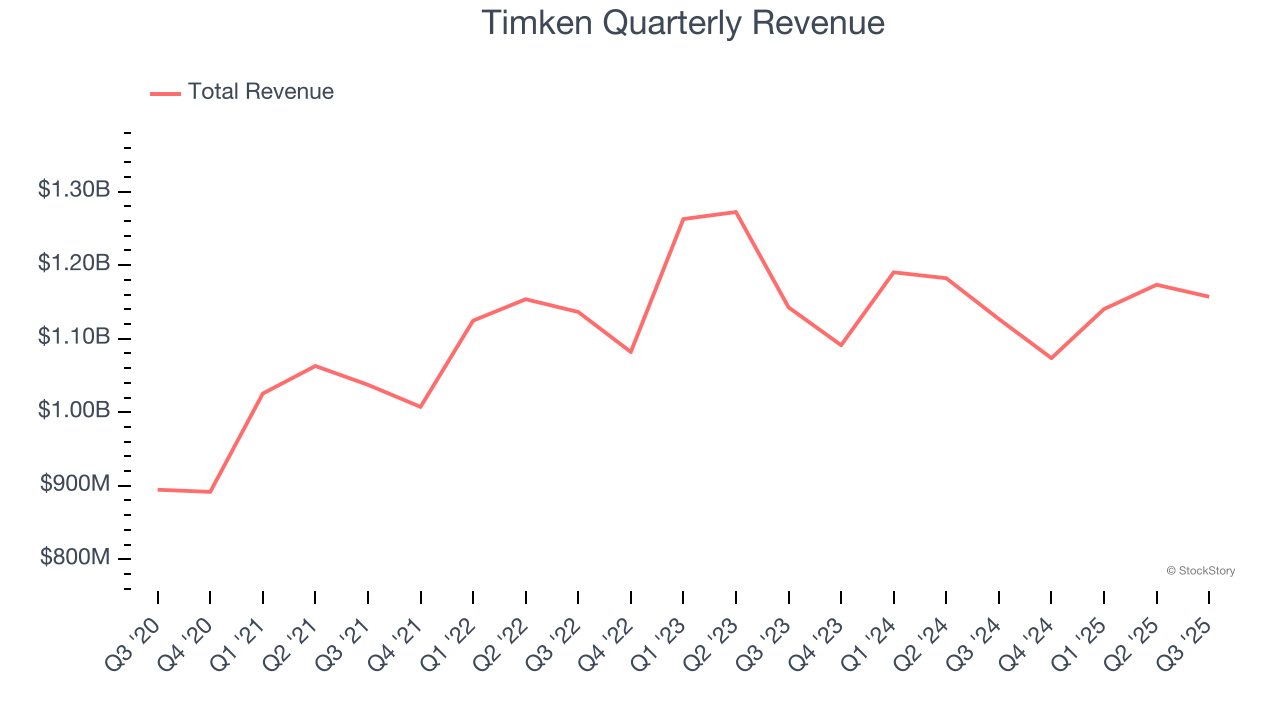
We at StockStory place the most emphasis on long-term growth, but within industrials, a half-decade historical view may miss cycles, industry trends, or a company capitalizing on catalysts such as a new contract win or a successful product line. Timken’s performance shows it grew in the past but relinquished its gains over the last two years, as its revenue fell by 2.3% annually. 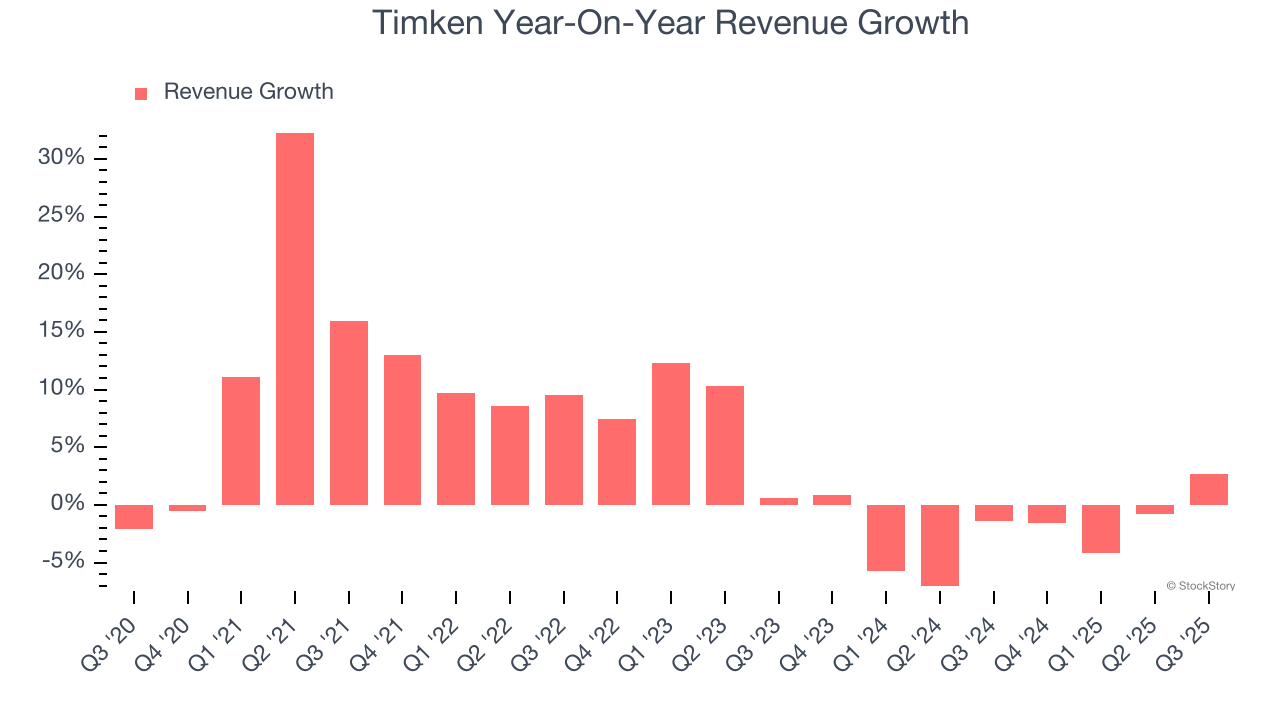
We can dig further into the company’s sales dynamics by analyzing its organic revenue, which strips out one-time events like acquisitions and currency fluctuations that don’t accurately reflect its fundamentals. Over the last two years, Timken’s organic revenue averaged 4.1% year-on-year declines. Because this number is lower than its two-year revenue growth, we can see that some mixture of acquisitions and foreign exchange rates boosted its headline results. 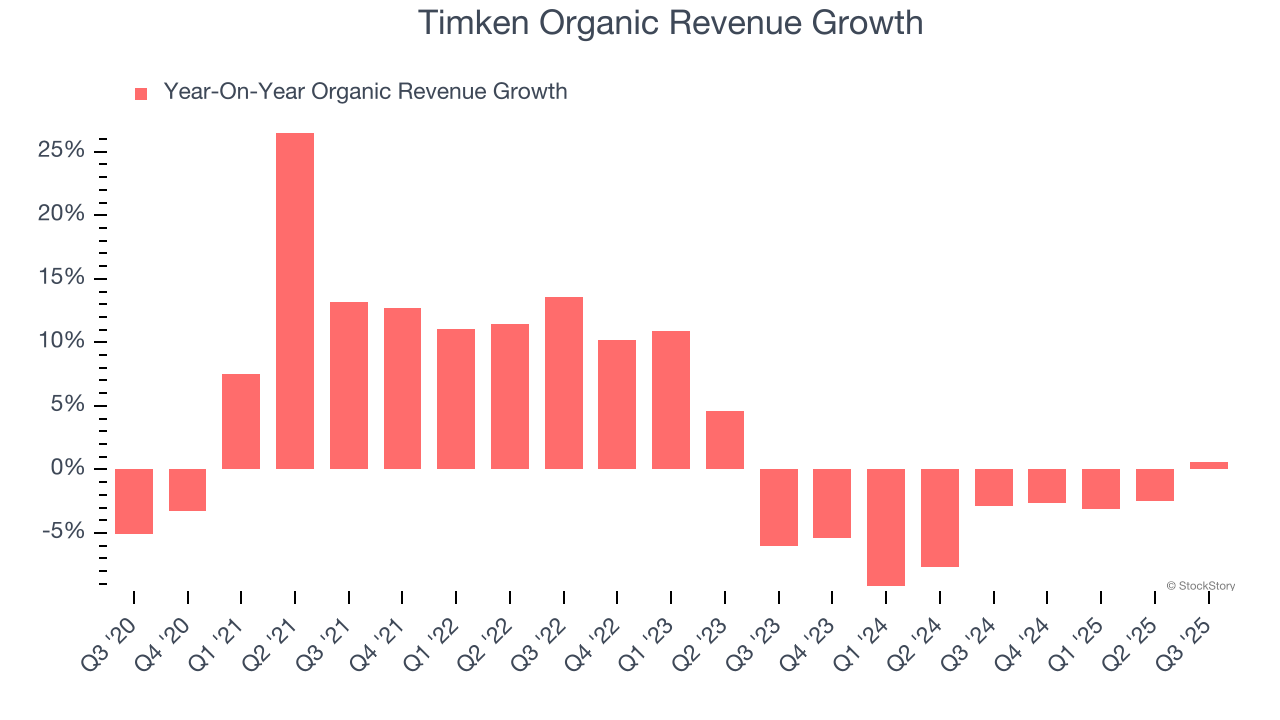
This quarter, Timken reported modest year-on-year revenue growth of 2.7% but beat Wall Street’s estimates by 3.6%.
Looking ahead, sell-side analysts expect revenue to remain flat over the next 12 months. While this projection indicates its newer products and services will fuel better top-line performance, it is still below average for the sector.
Here at StockStory, we certainly understand the potential of thematic investing. Diverse winners from Microsoft (MSFT) to Alphabet (GOOG), Coca-Cola (KO) to Monster Beverage (MNST) could all have been identified as promising growth stories with a megatrend driving the growth. So, in that spirit, we’ve identified a relatively under-the-radar profitable growth stock benefiting from the rise of AI, available to you FREE via this link.
Operating Margin
Timken has been an efficient company over the last five years. It was one of the more profitable businesses in the industrials sector, boasting an average operating margin of 13.1%. This result was particularly impressive because of its low gross margin, which is mostly a factor of what it sells and takes huge shifts to move meaningfully. Companies have more control over their operating margins, and it’s a show of well-managed operations if they’re high when gross margins are low.
Looking at the trend in its profitability, Timken’s operating margin decreased by 1.1 percentage points over the last five years. This raises questions about the company’s expense base because its revenue growth should have given it leverage on its fixed costs, resulting in better economies of scale and profitability.
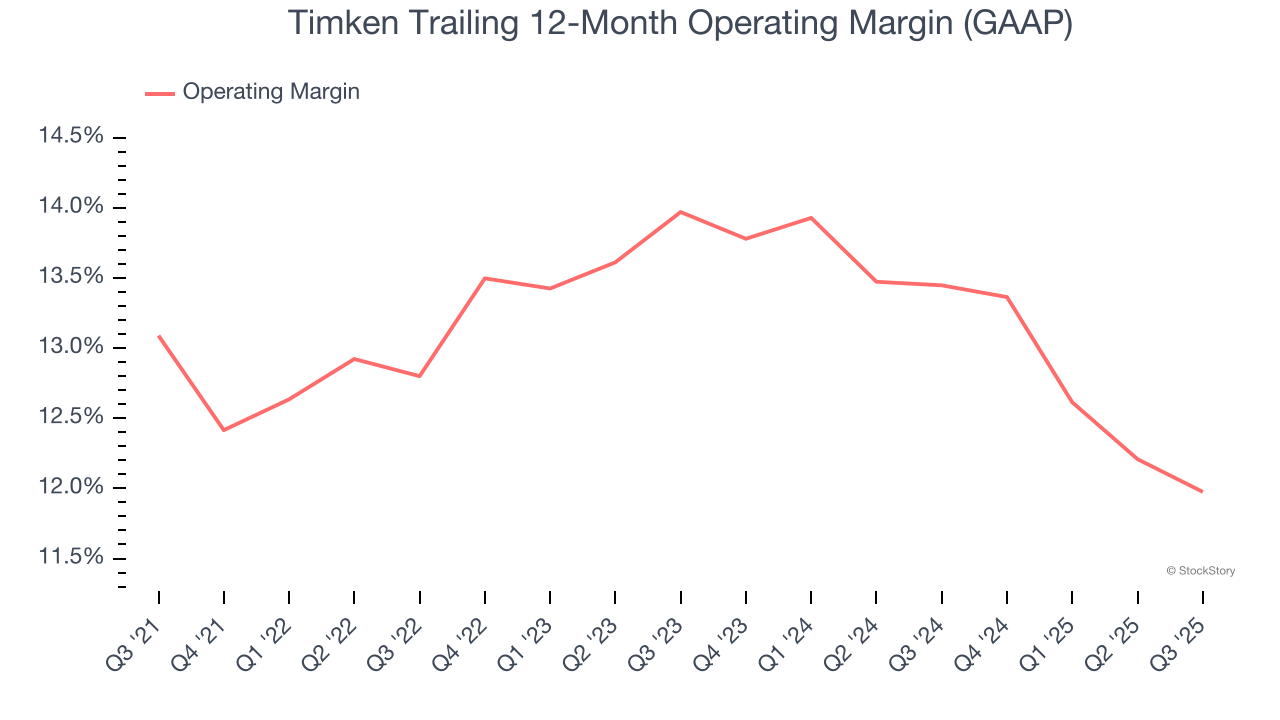
In Q3, Timken generated an operating margin profit margin of 12%, in line with the same quarter last year. This indicates the company’s cost structure has recently been stable.
Earnings Per Share
We track the long-term change in earnings per share (EPS) for the same reason as long-term revenue growth. Compared to revenue, however, EPS highlights whether a company’s growth is profitable.
Timken’s unimpressive 5.5% annual EPS growth over the last five years aligns with its revenue performance. This tells us it maintained its per-share profitability as it expanded.
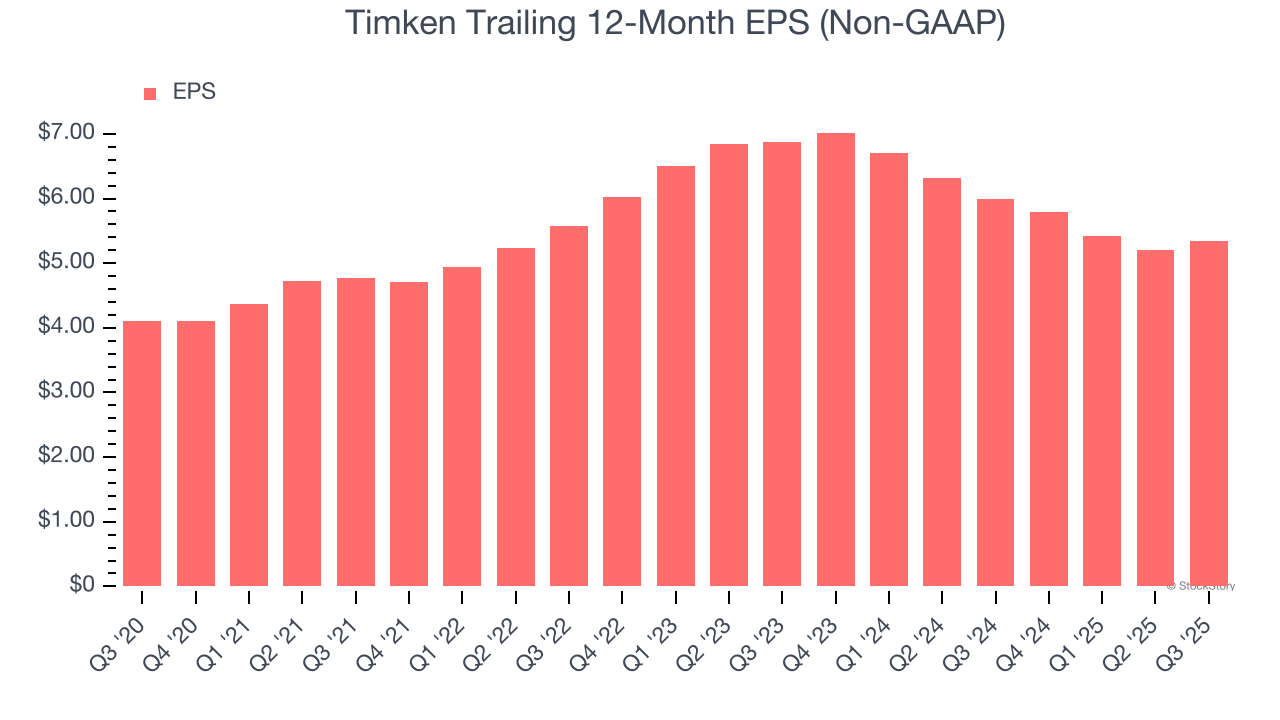
Like with revenue, we analyze EPS over a shorter period to see if we are missing a change in the business.
Timken’s two-year annual EPS declines of 11.8% were bad and lower than its two-year revenue losses.
Diving into the nuances of Timken’s earnings can give us a better understanding of its performance. While we mentioned earlier that Timken’s operating margin was flat this quarter, a two-year view shows its margin has declined. This was the most relevant factor (aside from the revenue impact) behind its lower earnings; interest expenses and taxes can also affect EPS but don’t tell us as much about a company’s fundamentals.
In Q3, Timken reported adjusted EPS of $1.37, up from $1.23 in the same quarter last year. This print easily cleared analysts’ estimates, and shareholders should be content with the results. Over the next 12 months, Wall Street expects Timken’s full-year EPS of $5.35 to grow 7.8%.
Key Takeaways from Timken’s Q3 Results
We were impressed by how significantly Timken blew past analysts’ revenue expectations this quarter. We were also glad its organic revenue outperformed Wall Street’s estimates. Zooming out, we think this was a solid print. The stock traded up 3.8% to $80.15 immediately after reporting.
Sure, Timken had a solid quarter, but if we look at the bigger picture, is this stock a buy? If you’re making that decision, you should consider the bigger picture of valuation, business qualities, as well as the latest earnings. We cover that in our actionable full research report which you can read here, it’s free for active Edge members.




